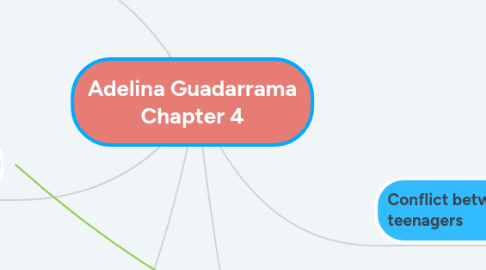
1. Shared Environmental vs Non shared Environmental:
1.1. Shared= make individuals in the same environment similar.
1.2. Non shared Environmental: makes the individuals different. Ex; (my sister and I are very different even if we shared the same environment).
1.2.1. Individuals have different reactions to context and the context can determine the type of person you are. Ex. I try to be very independent, strong, and accept challenges while my sister is the opposite.
2. Adolescents family in a changing society:
2.1. Very hard circumstances like divorce, single parenthood, remarriage, poverty.
2.1.1. Divorce conflict: the disorganized and disruption of parenting during divorce puts a lot of stress on the adolescent. There is no secure ground for them to feel completely comfortable due to all the changes and conflict.
2.2. Poverty is something that affects almost 17% of adolescents in the United States and 21% live in low income households.
2.3. This can create stress on the adolescent especially in today's society because everyone has the latest technology at school, wardrobe, accessories; etc.
3. The relationships in the family context has high influenced on the adolescents adjustment.
3.1. Throughout development, adolescents continue to need the support and guidance of adults who truly care about them.
4. Conflict between parents and teenagers
4.1. Family Systems Theory: emphasis on interconnections among different family relationships like marital, parent-child, sibling.
4.2. Disagreements of parents and adolescents typically revolve around parental control. when violations are done in relationships it changes the function of family.
4.2.1. as adolescents continue to develop; mothers and fathers have different relationships with their teenagers. For example; fathers are more likely to be perceived as distant authority figures.
4.3. * interesting to note that adoelscents don't just disagree with rules just because.
4.3.1. Teenagers will actually agree with rules set that make sense to them and they believe are moral and fair.
4.3.1.1. issue begins when the adolescent views the rules as binding some sort of personal action like "don't wear lipstick" or "don't wear that to the party".
4.3.1.1.1. interesting because adolescents are beginning to form their "selfs" and this is one way they manifest who they are and what they believe.

